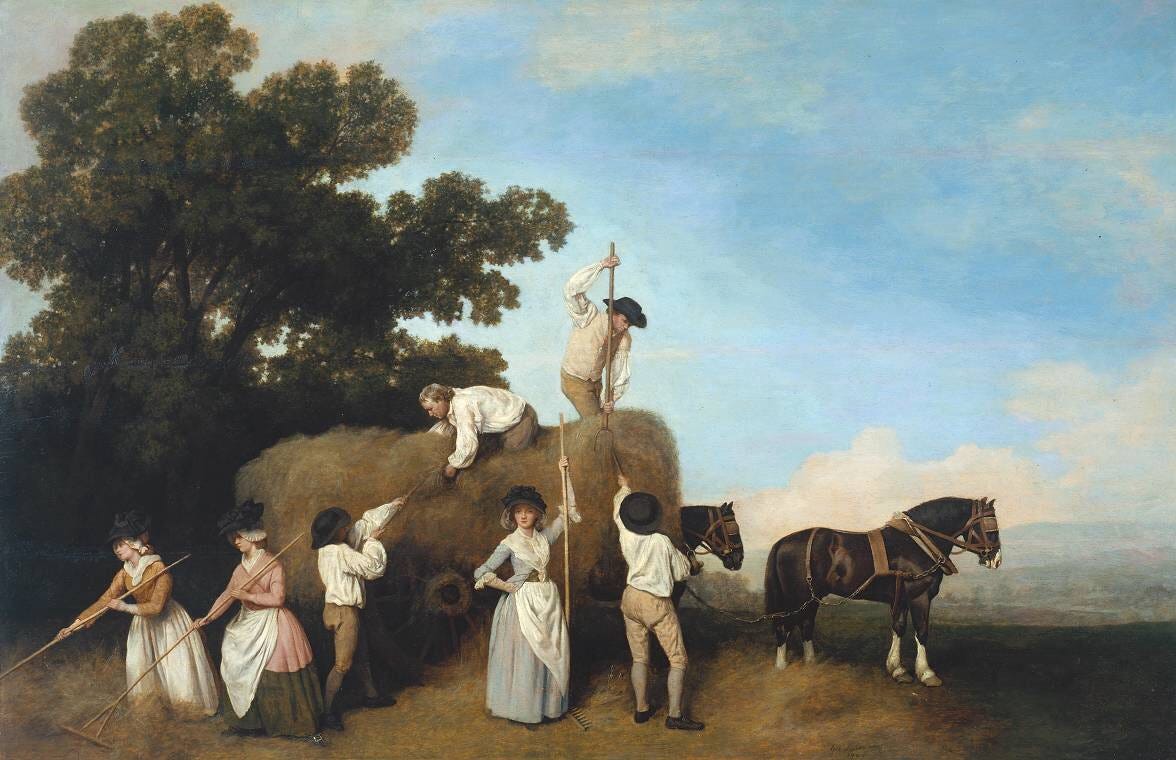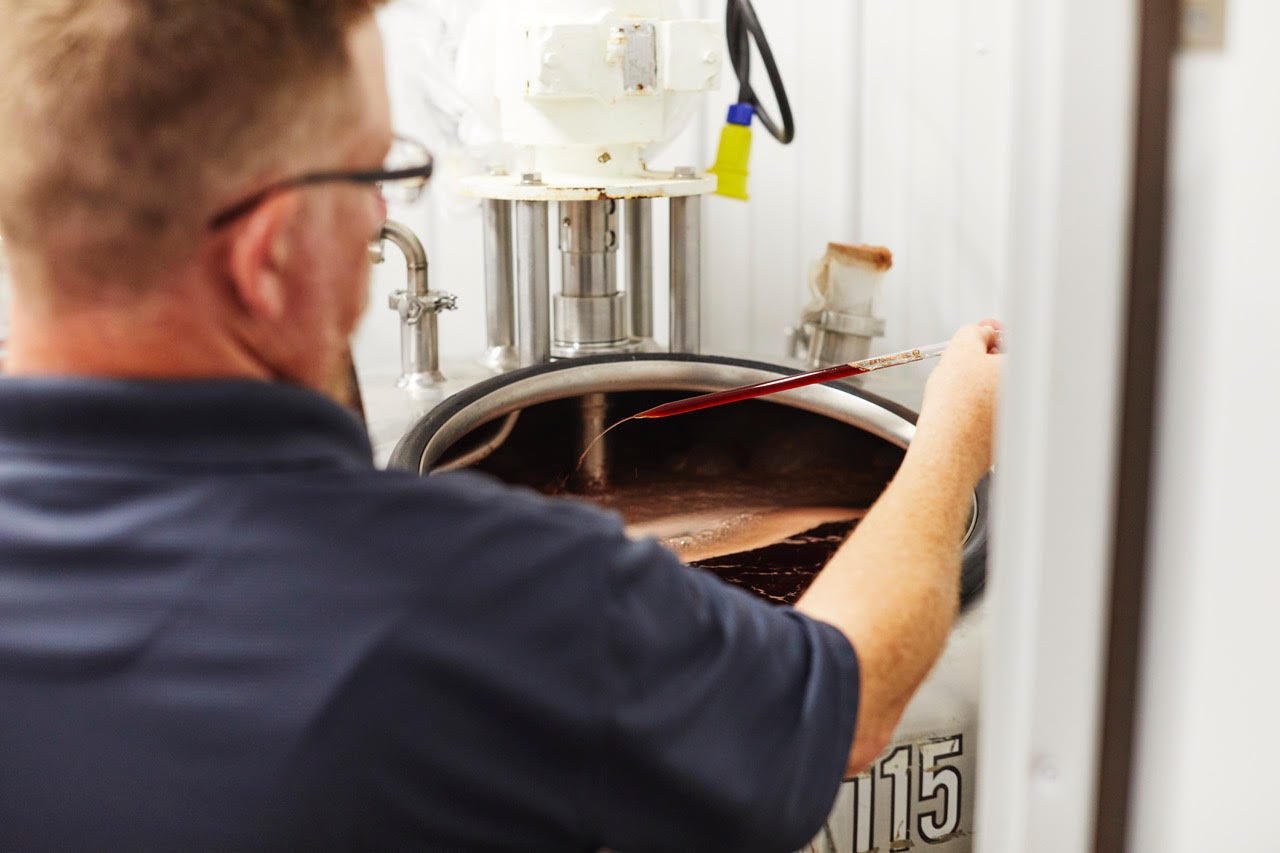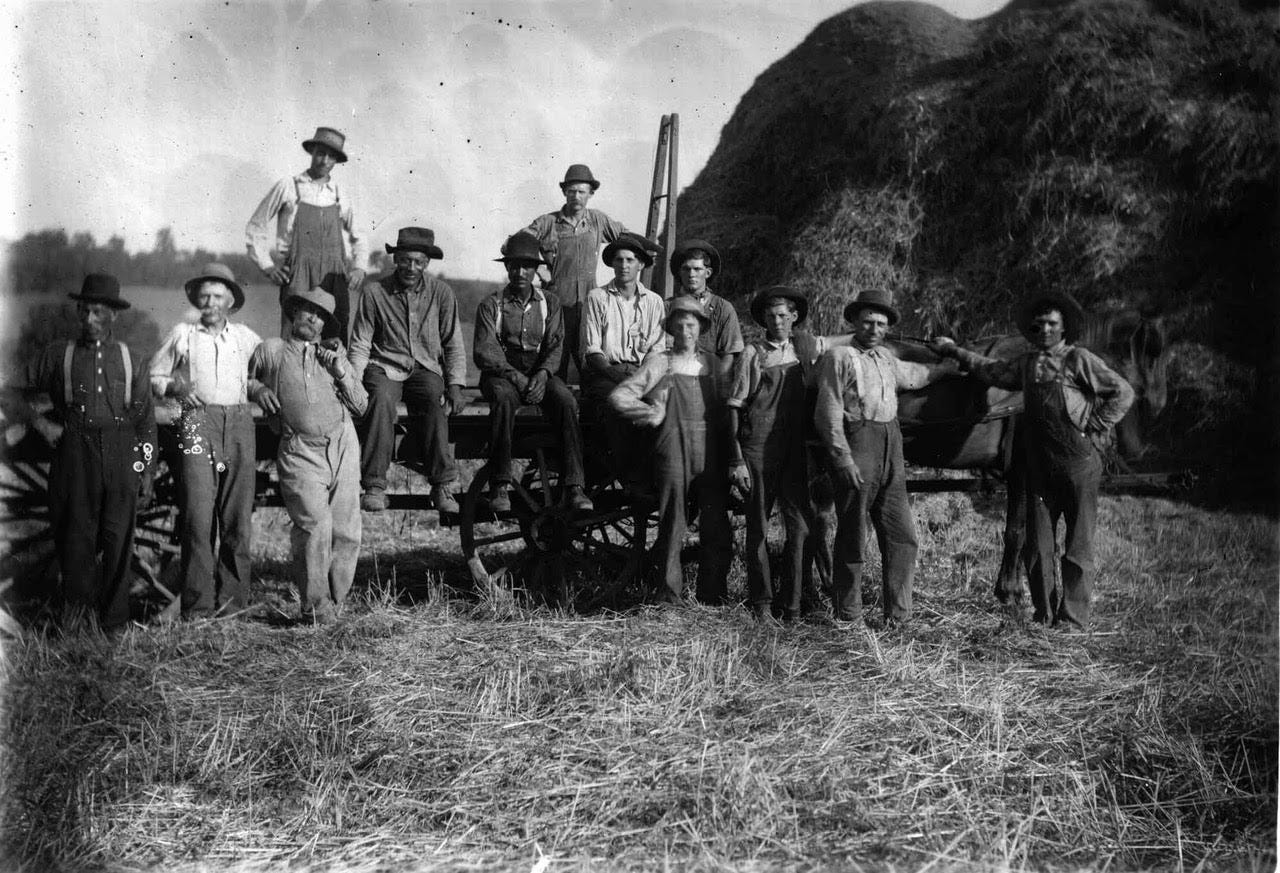Haymakers and Hippocrates
Summertime temps call for summertime beverages. Here's the ancient Greek origin of 2020's latest Instagrammable beverage.
Hello and welcome to Give Me Weird Drinks, a newsletter for exploring the world of beverages! Even if summer is canceled, 2020’s drink of the summer won’t be.
Summer months are around the corner and the arrival of the scorching solstice means it’s time to take a closer look at a weird drink that’s so old Greek wrestlers from back in the day were probably drinking the stuff while getting ready for the ancient Olympic Games. It was the sports drink of choice before sports drinks were sports drinks.
Its original form was called oxymel. Its ingredients were simple: oxy, or acid, in the form of vinegar; mel, or honey, in the form of, well, honey; water and whatever herbs were at hand. Even Hippocrates used to prescribe the drink for patients suffering from coughs.
Like the ancient Greeks, we know that acidity makes the mouth water and whets the appetite to consume more, while honey provides energy and sweetness. Building on the knowledge of the ancients, recent studies have found vinegar could help those with diabetes to better manage their disease and help others feel more full after a meal. Honey has been shown to inhibit the growth of certain bacteria causing gastric problems. Above all, oxymel was an obvious source of hydration.
But while oxymel is interesting, weird drinkers really want to know about switchel.
Fast forward to the 1700s in colonial America. Farmers in New England started whipping together a concoction reminiscent of oxymel and calling it switchel, or haymaker’s punch. As they tromped through their fields, cutting grass to put up hay (by hand!) in the sweltering sun, they were at risk for dehydration and cramps.

A bunch of thirsty haymakers in this painting from 1785, appropriately entitled Haymakers, by George Stubbs
To combat fatigue, they would mix water with ginger; vinegar—typically apple cider vinegar—and a sweetener, such as molasses, maple syrup or sugar. Like the oxymel of old, switchel helped hydrate, energize and supplied potassium electrolytes to farmers.
“It was like the early Gatorade,” explained Dr. John Westerdahl, a nutritionist and health educator, who has worked on beverage projects for companies like Bragg Live Food Products and Shaklee Corporation.
While working at Bragg, Dr. Westerdahl began researching switchel as inspiration for the health food company’s own line of apple cider vinegar drinks. Switchel’s origin is murky, he said. Some think it originated in the Caribbean, while others point to the Northeast region of colonial America. Vermonters, in particular, are proud of their maple syrup-based switchel recipes.
While simple to make, each of switchel’s ingredients plays a role: most obviously, water serves to hydrate.
The spicy addition of ginger added flavor and might have even triggered the brain to keep drinking, said Dr. Westerdahl. Ginger helps calm an upset stomach. With no way to sanitize water it may have promoted better digestion.
Another theory says it was added to provide a “warming” sensation that aligned with the warm weather and helped the body maintain its equilibrium. A shot of rum or apple brandy might have added even more firepower to a late afternoon version of the beverage.
Meanwhile, the apple cider vinegar, or ACV, commonly used in the Northeast has been associated with a number of health benefits, but not all of them are supported by science.
“Vinegar folklore is as colorful as it is practical,” noted Dr. Carol Johnston, a nutrition professor at Arizona State University, and Cindy Gaas in a peer-reviewed paper on the sour liquid. While vinegar’s anti-infective properties might not pass today’s scientific standards and its antitumor qualities beg for more study, its short-term effects on the feeling of fullness after a meal are notable. Perhaps more promising, it seems to help the body control its glycemia, which could be particularly beneficial for diabetics.
“Vinegar is widely available; it is affordable; and, as a remedy, it is appealing,” the researchers concluded.
The sweeteners favored by colonial farmers, maple syrup and molasses, both provide more than just calories. Maple syrup has calcium and potassium, both electrolytes, as well as zinc and other minerals. Molasses has many of the same nutrients, just in different proportions.
Today, this original, original sports drink is making somewhat of a comeback: it turns out weird drinkers might be easier to catch with vinegar than with honey.
In a move sure to put smiles on faces at the Vinegar Institute (yes, the vinegar industry has a trade group and May is National Vinegar Month), vinegar is enjoying some artisan-appreciative tailwinds.
“Small-batch vinegars” and acetic acid-based cocktails have been showing up on menus in recent years. Richard Stewart, an Ohio-based “acid alchemist” and co-owner of The MadHouse Vinegar Company, said craft-made batches of the sour stuff are seeing a second life and “a sort-of renaissance.” In fact, some of his vinegars will soon be showing up in select Krogers, he said.

Richard Stewart sampling a red wine vinegar for acidity testing (The MadHouse Vinegar Co.)
A farmer himself, Stewart still mixes together switchel during the hot summer months to keep his workers well-hydrated. When his farmhands are stuffing hay into the upper reaches of his barn, the temperature can easily top 120° Fahrenheit, he said. It’s tough, dusty work and there’s barely a breeze. “We’re literally using haymaker’s punch to water our haymakers,” he explained. “The word ‘slake’ was designed for switchel. It’s a wonderful drink. You can just chug it.”
Years before The MadHouse Vinegar Company started brewing vinegar in 2017, Dr. Westerdahl was helping develop his own line of apple cider vinegar-based beverages at Bragg, based on an ACV and honey combination. The work resulted in a lineup of fruit-flavored, ready-to-drink beverages that are still sold today.
Meanwhile, an Instagrammable ACV-based drink, called VINA, hit shelves and online retailers earlier this year. The company’s beverage line is made with unfiltered apple cider vinegar and a dose of carbonation, along with sweeteners and juices.
While ACV-based drinks may be trending, switchel can be made with any vinegar, said Stewart. ACV caught on in New England because cider and cider vinegar was on hand. But vinegars of old were born of the regional alcohols-of-choice: Austria, Scotland and Germany made renowned malt vinegars, while Italy was famous for its wine-based vinegars.

Switchel drinkers of old. Stewart’s great-grandfather, “Doc” Saur, is in the white shirt, second from left (a prescient name for the ancestor of a vinegar maker). Note the mountain of wheat straw in the background (The MadHouse Vinegar Co.)
“A lot of people are doing switchel, rather than making vinegar, because they want to make a beverage,” said Stewart, explaining why ready-to-drink products seem to be on the upswing. The MadHouse Vinegar Company isn’t bottling and selling switchel, but it does make fresh batches for its customers using vinegars made on site, honey from its own hives, baby young ginger from the farm (yes, ginger can be grown in Ohio) and water.

Today’s switchel drinkers. Richard Stewart’s father, Dick, his friend and hired hand, David Schweitzer, and Stewart’s son, Jayden (L-R) (The MadHouse Vinegar Co.)
“The beauty of switchel is that it’s easy for anyone to make,” Stewart said. “We’ve got good vinegar, just make your own.”
Nevertheless, the ease of whipping up homemade weird drinks hasn’t stopped companies like Bragg or VINA. It turns out what’s old is new again: VINA’s lineup includes an oxymel-inspired Honey flavor, and a switchel-esque Lemon Ginger flavor.
Hippocrates would be proud.


